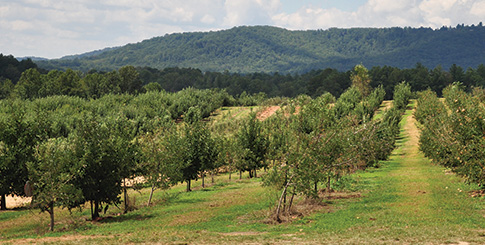As North Carolina and South Carolina continue to experience population growth, Carolina growers, shippers, and wholesalers expect to increase shipments to the region’s booming retail and foodservice customers. But are they up to the task?
“North Carolina is growing by leaps and bounds,” affirms Daryl Johnston, vice president of sales and marketing for Titan Farms Sales, LLC, in Ridge Spring, SC. “The major cities and the rural areas of North Carolina and South Carolina both continue to grow—and will provide more opportunities for business.”
Indeed, North Carolina’s population jumped to a record 10.1 million in 2016, while South Carolina increased to 5 million residents, according to the U.S. Census Bureau. Charlotte and Raleigh in North Carolina and Charleston in South Carolina are among the region’s metropolitan areas experiencing the most growth.
Chris Rawl, president of Clayton Rawl Farms Inc., in Lexington, SC, concurs: “The growing population will mean more produce business for South Carolina,” and Clayton Rawl Farms is ready. The family business grows and ships vegetables and leafy greens throughout the Southeast from the South Carolina State Farmers Market and Agri-business Center in West Columbia. Rawl credits the Columbia market’s location for being a key link in the fresh produce supply chain.
South Carolina’s Columbia Market
One of the newer facilities in the region, the South Carolina market serves as a hub for growers selling to wholesalers and direct to consumers. Constructed in 2011, the new market replaced an aging facility with state-of-the-art features and pleasing aesthetics. Rawl applauds the improvements, noting, “Keeping up with food safety at the older place was a nightmare.”
Now there’s more space, better maneuverability for trucks, and the market attracts buyers from throughout the region from Tennessee, West Virginia, Virginia, Ohio, Maryland, and New Jersey. There are four large wholesalers on the premises and many Georgia and Florida growers sell on the market as well. With $350 million in yearly sales, it ranks as one of the larger markets in the Southeast by produce volume, according to Brad Boozer, its manager.
“We’re located in the upper southeastern states so people can get to us in six to ten hours,” Boozer explains, which means even customers from New York and Ohio load trucks. “We have a good location with good interstate highway access. This new market is larger than the older one and gives trailer drivers more space to enter.”
Columbia’s economy is doing well too, and the city is undergoing several major construction projects, bringing new businesses and housing to the region. This, in turn, continues to amplify wholesale traffic, which Boozer says remains strong.
Jeff Taylor, owner of Taylor Boys Produce, Inc., in Enoree, SC—equidistant from the West Columbia market and Charlotte, NC—has been impressed by local melon volume, which he says has been particularly strong. He attributes part of the demand to South Carolina’s ability to attract manufacturers, which brings in more jobs and increased food demand to the area.



